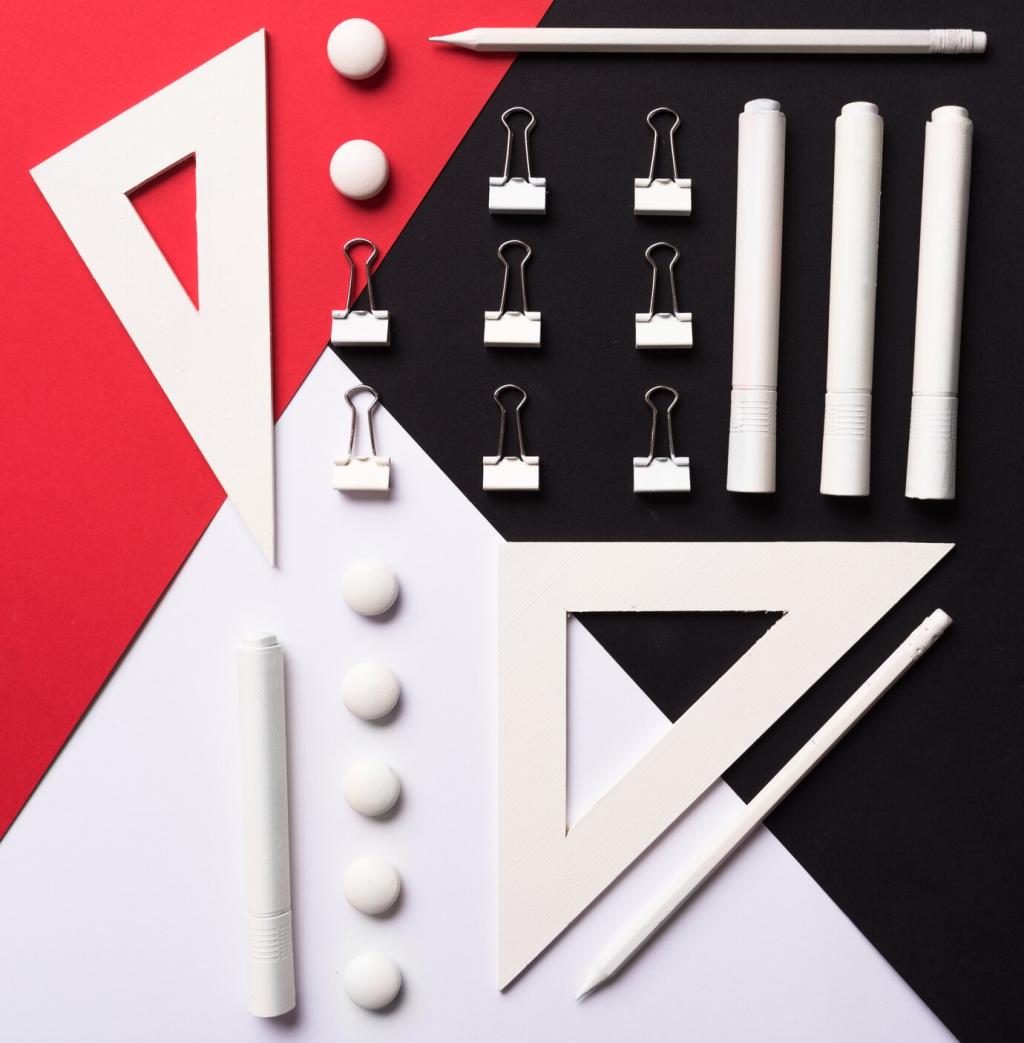Minimalist Design Case Studies: Clarity That Works
Today’s chosen theme: Minimalist Design Case Studies. Dive into real-world stories where fewer elements, smarter hierarchy, and purposeful whitespace turned tangled experiences into products people understand, trust, and love. Subscribe for future case study deep dives.
Why Minimalism Solves Real Problems
01
In a retail app audit, we removed decorative steps and combined shipping and review pages. Checkout time dropped dramatically because the path was obvious, friction was minimized, and uncertainty evaporated, turning hesitation into confident completion.
02
One dashboard replaced dense tables with spaced cards and a single highlighted metric. The whitespace wasn’t empty; it guided attention, created rhythm, reduced scanning fatigue, and increased daily return visits because people finally found what mattered.
03
A product suite used a 60/30/10 palette to anchor focus. Primary actions always appeared in the 10 percent. Users stopped hunting, error rates fell, and the interface felt calm, coherent, and consistent across three separate platforms.


Case Study: A News App That Breathes
Sections collapsed into a single logical feed with topic chips. We cut five navigation items, merged two similar categories, and elevated local headlines. Readers reported less decision anxiety and more curiosity, spending longer with fewer, better choices.
Case Study: A News App That Breathes
We chose a humanist typeface with generous x-height and set a strict scale. Headlines earned contrast, summaries earned restraint. Without extra icons, readers skimmed faster, saved more articles, and returned to continue reading without losing contextual place.
E‑commerce Redesign: Less to Sell More
We replaced the carousel with one decisive hero shot and a single benefit-driven headline. Users stopped waiting for the next slide, understood the value in seconds, and scrolled with purpose toward reviews and sizing rather than aimlessly wandering.
E‑commerce Redesign: Less to Sell More
Instead of twelve filters, we kept four that shaped meaningful product differences. The result: shorter deliberation, clearer comparison, and more confident adds to cart. Minimal options didn’t limit freedom; they liberated users from analysis paralysis and fatigue.





Accessibility Within Minimalist Systems
Contrast and Calm
We audited color tokens to meet WCAG contrast without shouting. The palette stayed soft, but interactive states remained unmistakable. Users with low vision reported easier navigation, proving accessibility and minimalism complement each other when tested thoughtfully and rigorously.
Focus States That Respect Silence
We engineered robust focus rings and skip links that appear when needed, then recede. Keyboard users completed tasks gracefully, with clear orientation and no extra clutter. Minimal does not mean invisible; it means intentionally seen at the right moments.
Icons That Speak Clearly
We pared the icon set to essentials with consistent stroke and metaphor. Labels remained present until recognition was assured. Ambiguity vanished, tap targets grew, and error recovery improved. Quiet icons, clear words, and patient spacing created dependable comprehension.
Business Case in Three Metrics
Time on task, error rate, and conversion are our anchor metrics. We show how each simplification maps to a measurable movement. Stakeholders stop debating color and start discussing outcomes, which reframes minimalism as strategy instead of stylistic preference.
A/B Tests With Subtle Variations
We prototype minimal changes—typographic scale, button density, progressive disclosure—and test them. Small, elegant adjustments compound into significant gains. Data earns trust while the interface stays refined. Want templates for this testing plan? Subscribe, and we will send them.
Workshops That Remove, Not Add
In workshops, we play a removal game: every element must justify itself with a user story or metric. Teams leave lighter screens, clearer flows, and shared conviction. The best addition often remains a respectful, intentional subtraction that unlocks clarity.

Building a Minimalist Pattern Library
Token‑First Simplicity
We documented type, color, radius, and spacing tokens before components. Teams composed confidently, avoiding ad‑hoc decisions. The library kept growing smaller and stronger, letting products evolve consistently without bloating into a chaotic toolkit nobody trusted anymore.


Whitespace Rules as Components
We codified spacing as reusable rules—stack, cluster, and inset—so designers orchestrated rhythm predictably. Engineering loved the predictability, and users felt harmony. Minimalism persisted because the emptiness was structured, not accidental, supporting comprehension and enjoyable scanning across complex content.
